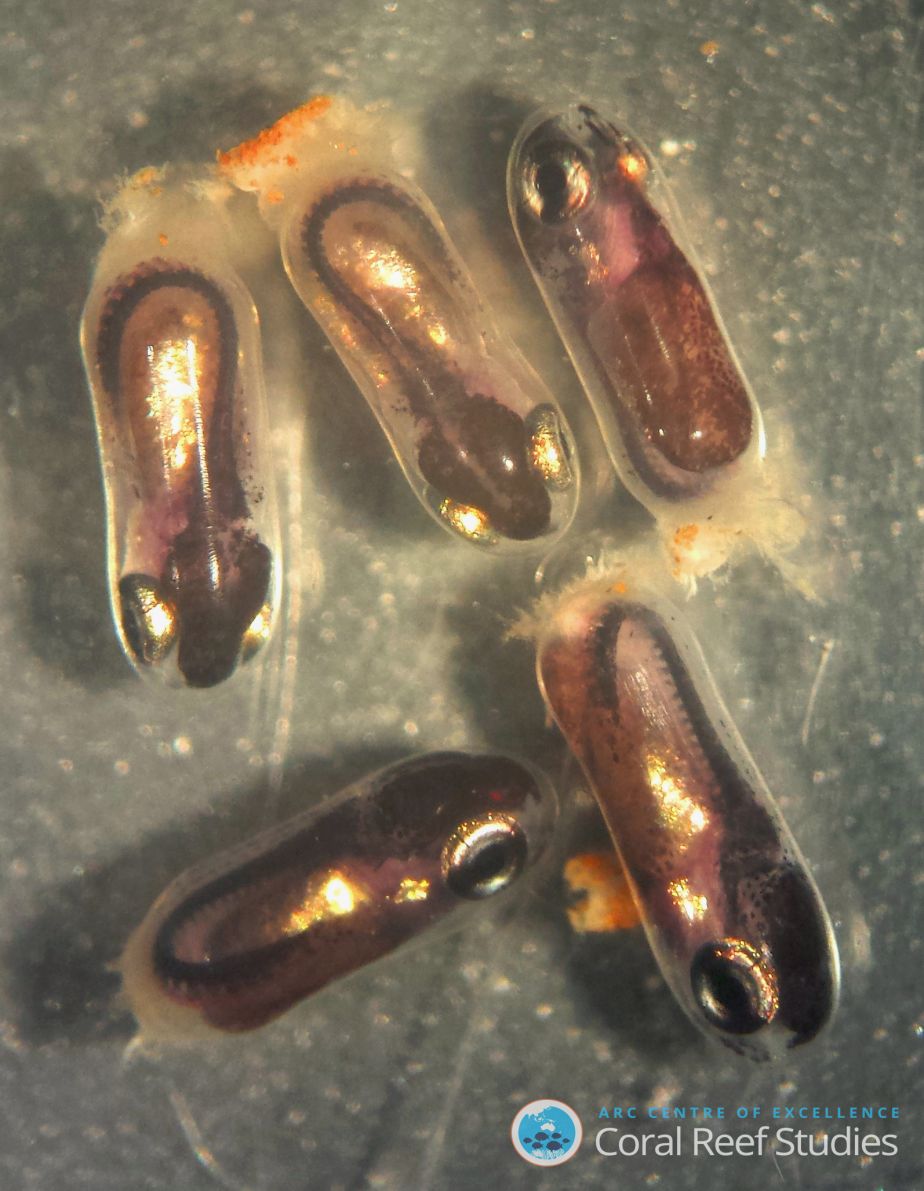Media Releases
Baby reef fish can ‘sniff out’ their relatives before they hatch

A recent discovery has uncovered that two species of damselfish can recognise their relatives by smell – and it’s all happening before any of them have even hatched.
Dr. Jen Atherton and Prof. Mark McCormick, both at the ARC Centre of Excellence for Coral Reef Studies (Coral CoE) at James Cook University, found that young damselfish imprint on the odours of their closely related kin whilst they are still only embryos.
“These fish can detect and recognise cues from their siblings quite early on in their development,” says Dr. Atherton, “They start to panic when they pick up the scent of an injured relative.”
Dr. Atherton adds that she discovered a highly sophisticated sense of smell: “The most amazing thing is, not only can the baby damselfish identify cues from other sibling fish with the same parents - they can differentiate between the fish of different parents, and also different species altogether,” she explains. “These fish are only about eight days old and haven’t even hatched yet!”
This capability may be an important tool for the fish to help them avoid predators, with the early recognition of odours helping to reduce their chances of being eaten.
“These fish can increase their chance of survival not only through cooperating with their kin, who will help alert them to danger, but they may also use these scents to select ‘safe’ habitats,” Dr. Atherton said.
The study involved the embryos of two species of common coral reef damselfish – the cinnamon clownfish, and the spiny chromis. “To our knowledge, this is the first study to demonstrate kin recognition in a coral reef fish species, and even more remarkably this recognition develops among newly hatched larvae.
The study was a lab-based experiment, measuring fish embryo heart rates under a microscope – the embryos are transparent, so each individual heartbeat can be seen and counted.
“Looking at the change in heart rate from before and after the introduction of certain odours allowed us to quantify the fish embryo’s reaction to it,” says Dr. Atherton. She found different responses between kin, non-kin of the same species, and other species.
Damselfish are a diverse group of fish commonly found on coral reefs around the world. They perform many important functions that can promote the health of reef habitats.
The study “Kin recognition in embryonic damselfishes” is published in the journal Oikos: https://nsojournals.onlinelibrary.wiley.com/doi/10.1111/oik.03597
IMAGES
Please note that images must be credited as indicated per file name:
https://www.dropbox.com/s/sa99t3fhepcvu6i/Atherton%2C%20J_embryos_studyspecies_01.jpg?dl=0
Prof Mark McCormick
Chief Investigator, ARC Centre of Excellence for Coral Reef Studies
Phone: +61 (0)7 4781 4048 (AEST)
Email: mark.mccormick@jcu.edu.au
Dr Jennifer Atherton
ARC Centre of Excellence for Coral Reef Studies & James Cook University
Email: jennifer.atherton@my.jcu.edu.au
FOR FURTHER INFORMATION
Catherine Naum
Communications Manager
ARC Centre of Excellence for Coral Reef Studies
James Cook University
Townsville, QLD 4810 Australia
Phone: +61 (0)7 4781 6067, +61 (0) 428 785 895
Email: catherine.naum1@jcu.edu.au